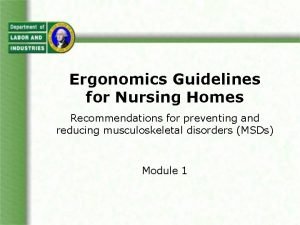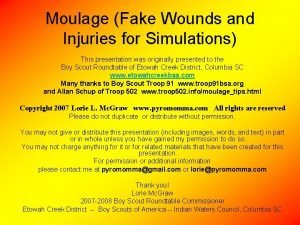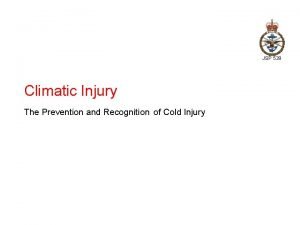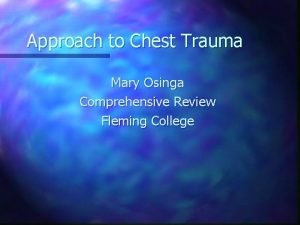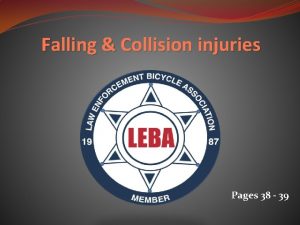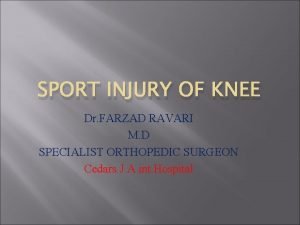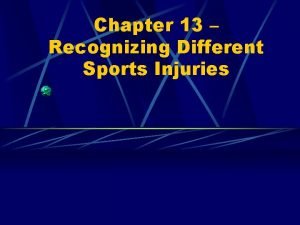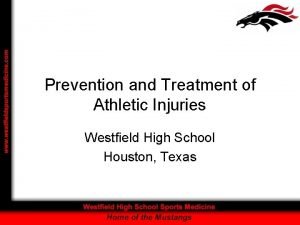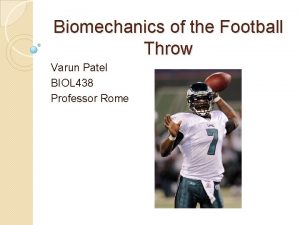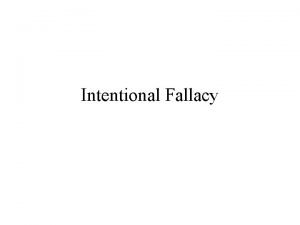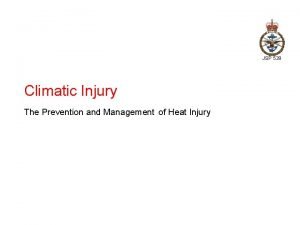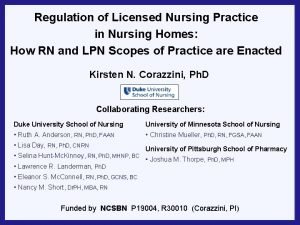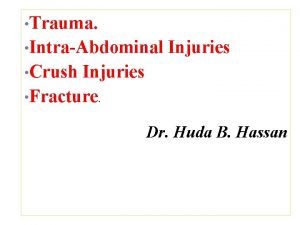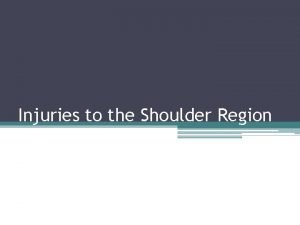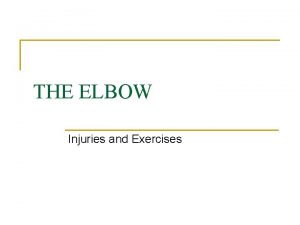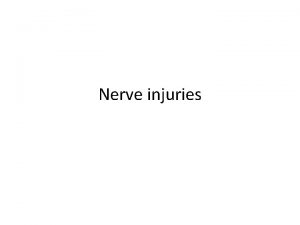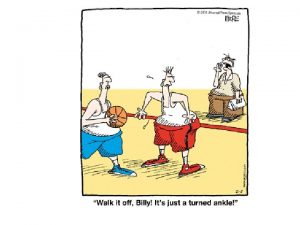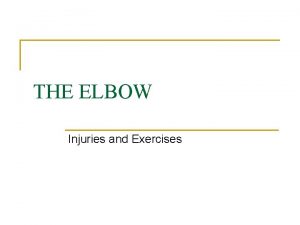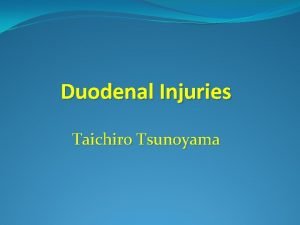Injuries in Nursing Homes u Nursing Homes are






















- Slides: 22

Injuries in Nursing Homes u Nursing Homes are ranked fifth among all industries for low back injuries u 17 Injuries For Every 100 Full Time Workers u Nursing Home Workers Have the Most Injuries Related to Overexertion of Any Industry (no. 1 for overexertion) u Injuries Rose 55% in the Last Decade

Why Injuries Are Increasing u Pressure in the Industry to Drive Down the Price of Health Care u Nursing Home Sector Seeing More Acutely Ill Patients - Hospitals Move Patients Out Faster u More Acutely Ill Patients Means More Dependant Patients who Requires More Handling

Other Injury Risks u Nursing (in general) has the highest rate of Falls to the Floor on the Same Level of any Group of Workers u 96 Cases per 10, 000 workers u Lack of Adequate Housekeeping Staff Contributes to Slipping/Falling Problem

Risks for Injury: Patient Handling Tasks u Frequent Manual Lifting of Patients is the Primary Risk u Two-person Manual Lift is the most common patient transfer method u Average Nursing Home Worker Lifts More Than 10, 000 Human Pounds Per Day

Other Stressful Tasks u Lifting Patient Up in Bed u Weighing Patient u Repositioning Patient u Making Bed With Patient In It u Making Bed Without Patient In It u Lifting Carrying Equipment or Supplies

Hoists Have Not Worked u One study found that mechanical hoists were used for only 2% of patient transfers u The reasons for not using hoists: u hoist not available u takes too much time u lack of staffing u the physical effort required to use hoist

For Dependant Weight Bearing Patients u For patient transfers, the two-person walking belt was found to be least physically stressful among several methods u Using a pulling technique (not lifting) was important to minimize stress to the worker u Training of workers to use the pulling technique with walking belts was required

Lifting Devices Differ Widely u Several Mechanical Lifting Devices were compared u Arjo-Century’s Ambulift Device was found to be least physically stressful to workers u Hoyer Lifts were found to be as physically stressful as manual lifting of patients

Comparing Three Lifting Devices u Using Hoyer lifts is more physically stressful than most manual methods u Trans-Aid lifts reduced physical stress compared to manual methods u Arjo-Century lift was least stressful mechanical device, and patients preferred this device (felt more secure)

Staff to Patient Ratio u Inadequate staffing is a major obstacle to injury prevention efforts u Many transfers require two workers, but are performed by one worker u Lifting Teams have been used successfully in hospital settings to dramatically reduce workers compensation losses

Adequate Equipment u Adequate equipment includes: u Walking Belts u Shower Chairs fit over toilet u Shower Chair fits easily into shower u Adaptive Clothing as needed

Ergonomics Efforts Do Work u In one study losses were reduced by 50% by making ergonomic improvements u Classifying patients and applying consistent transfer methods per category was important u Compliance Required Adequate Staff to Patient Ratio

Classifying Patients u dependent/non-weight bearing u dependent/weight bearing u independent

Patient Handling Per Classification u non-weight bearing: Use Mechanical Device u weight bearing dependant: Use Two-Person Walking Belt with Pulling Technique u independant: Patient Moves on Their Own

Lifting Team Approach u Also relies on classifying patients into categories u Lifting Team specially trained in each method or patient category u Lifting Team adheres strictly to prescribed methods per category u Adequate staffing ensured by Lifting Team approach

Lifting Team Approach u Team members selected for strength, ability u Nurses and Nurses Aids free to perform other tasks u May increase number of Full Time Equivalents (FTE) required u Has been cost-effective in hospital settings due to reductions in injuries and costs

Administrative Issue u Handling of Patients By Prescribed Method Per Patient Classification Required u Compliance Must Be Monitored and Enforced/Reinforced u Adequate Staffing is Required for Compliance

Other Equipment u Adjustable height beds u Slings attached to beds u Adequate number of mechanical lifts u Adequate type of mechanical lift

Most Stressful Tasks u Ratings of Perceived Exertion has been useful in job/task evaluations of nursing home tasks u Transfers from wheelchair to toilet was most stressful task u Transfers from chair to bed also stressful u Two-person manual lifting method most stressful of several methods examined

Walking Belts and Gait Belts u Walking belts differ from gait belts in that they have handles and better secure the patient u For best results with walking belt method, nurses were instructed “Pull with your hand, not your back. Do not lift” u Many nurses have old habit of lifting when transferring - which must be “unlearned”

Improving Ergonomic Conditions u Consistent Use of Lifting Devices for Non- Weight Bearing Patients u Easily Adjustable Chair and Bed Heights u Adequate Staff to Patient Ratio - Increase Staff if Necessary u Training in Proper Techniques u Walking-Belts With Pulling Method

Standards and Regulatory u OSHA Launced an Initiative To Improve Conditions for Nursing Home Workers in 1996 u Unions Pushing for Enforceable Staffing Standards u OSHA’s Proposed Regulation on Ergonomics Could Stimulate Dramatic Improvement - If Made Into Law
 Mikael ferm
Mikael ferm Nursing homes day out an
Nursing homes day out an Ergonomics
Ergonomics Ggara
Ggara Qapi template for nursing homes
Qapi template for nursing homes A short backboard or vest-style immobilization
A short backboard or vest-style immobilization How to make fake injuries
How to make fake injuries Jsp 539
Jsp 539 Tim madsen everest
Tim madsen everest Jones and bartlett learning
Jones and bartlett learning Deadly dozen trauma
Deadly dozen trauma Injuries first aid
Injuries first aid Miniscus replacement
Miniscus replacement Chapter 13 worksheet recognizing different sports injuries
Chapter 13 worksheet recognizing different sports injuries Westfield sports injuries
Westfield sports injuries Kristen wilson injuries
Kristen wilson injuries Collateral ligament injuries sunshine coast
Collateral ligament injuries sunshine coast Chapter 23 hunger games questions
Chapter 23 hunger games questions Chapter 21 caring for head and spine injuries
Chapter 21 caring for head and spine injuries Definition of intentional fallacy
Definition of intentional fallacy Jsp539
Jsp539 Unit 15:7 providing first aid for heat exposure
Unit 15:7 providing first aid for heat exposure Chapter 13:2 preventing accidents and injuries
Chapter 13:2 preventing accidents and injuries


